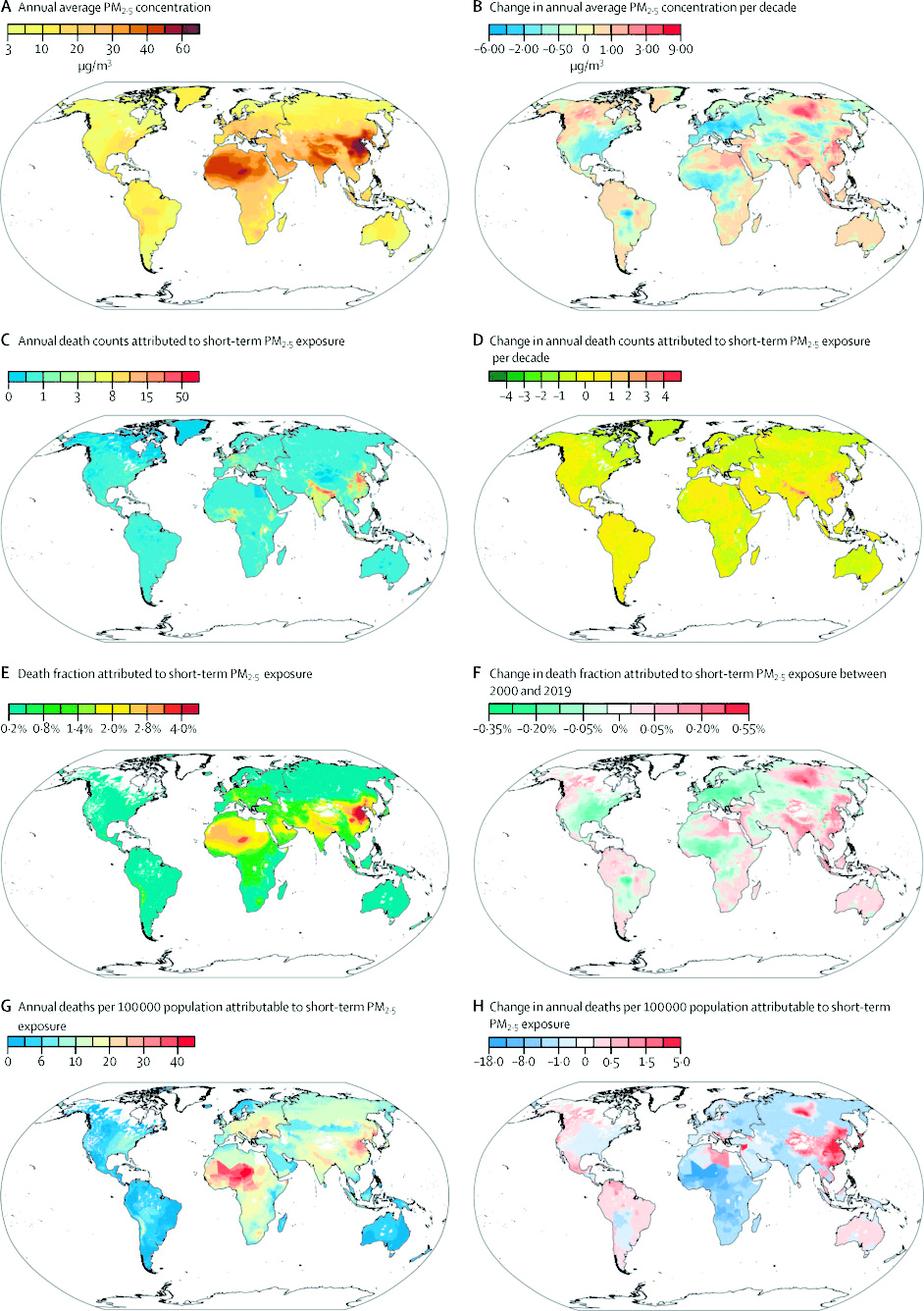
Breathing in air having fine particulate matter (PM2.5) even for a few hours and up to a few days, resulted in more than a million premature deaths globally every year from 2000 to 2019, according to new research.
It also found that Asia accounted for roughly 65 per cent of the global mortality, with Eastern Asia accounting for more than 50 per cent. Further, more than one in every five of the total global deaths were found to occur in urban areas.
Analysing mortality and PM2.5 pollution in over 13,000 cities and towns around the world, researchers, led by those at Monash University, Australia, also showed that China consistently ranked as the topmost country in the aspect of mortality burden attributed to PM2.5 exposure in 2000, 2010, and 2019.
South Asian countries were also found to rise in rankings over the entire 20-year study period, with Bangladesh moving from 11th in 2000 to 3rd in 2019, India moving from 15th to 8th, and Pakistan moving from 14th to 9th.
In 2019, New Delhi in India and Guangzhou and Beijing in China ranked highest among the top 20 cities with the highest proportion of urban deaths attributed to PM2.5 exposure, the researchers said in their study.
The study, published in The Lancet Planetary Health journal, is important because it is the first to look at short-term exposure globally, rather than the long-term impacts of persistent exposure such as for people living in cities with high pollution levels, said lead researcher Yuming Guo, Head of the Monash Climate, Air Quality Research Unit.
To date, most studies have focused on the health impacts of living in cities where pollution levels are consistently high, ignoring the frequent “spikes” in pollution impacting smaller urban areas and occurring due to, for instance, landscape fires, dust, and other intermittent extreme air-pollution concentration events, the researchers said.
“But this is the first study to map the global impacts of these short bursts of air pollution exposure,” said Guo.
According to Guo, the short-term health effects of being exposed to air pollution have been well documented, “such as the mega-fires in Australia during the so-called Black Summer of 2019–20 which were estimated to have led to 429 smoke-related premature deaths and 3230 hospital admissions as a result of acute and persistent exposure to extremely high levels of bushfire-related air pollution.”
The researchers also found that the mortality burden was highest in crowded, highly polluted areas in eastern Asia, southern Asia, and western Africa.
As such, the authors added that because of the high population densities in urban areas together with high levels of air pollution, “understanding the mortality burden associated with short-term exposure to PM2.5 in such areas is crucial for mitigating the negative effects of air pollution on the urban population.”
The study recommended that where health is most affected by acute air pollution, implementing targeted interventions – such as air-pollution warning systems and community evacuation plans – to avoid transient exposure to high PM2.5 concentrations could mitigate its acute health damages.